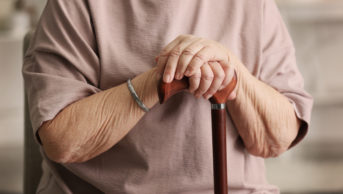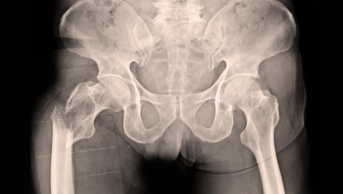
Clinicians are calling for the National Institute for Health and Care Excellence (NICE) to reconsider its provisional decision not to recommend use of the first new osteoporosis medication it has considered for more than a decade.
Romosozumab, which works by both inducing new bone formation and reducing bone breakdown, is one of only two treatments licensed by the Medicines and Healthcare Regulatory Agency (MHRA) that stimulates new bone formation. It is already approved for use in Scotland and Northern Ireland, as well as parts of Europe.
However, in a draft technology appraisal guidance document published on 25 November 2021, NICE stated it did not recommend romosozumab, within its marketing authorisation, for treating severe osteoporosis after menopause in people at high risk of fracture.
A joint letter, signed by more than 100 clinicians and led by the Royal Osteoporosis Society (ROS), has called on NICE to work with them to explore how patients in England and Wales could benefit from romosozumab, manufactured by UCB, “sparing them the pain and fear of fractures”.
In a press release published by the ROS on 4 January 2022, chief executive Craig Jones said: “We’re calling on NICE and the applicant company to get back round the table and work with us to ensure equal access to this important new treatment.
“Osteoporosis clinicians fear that technical misunderstandings are leading to an unfair scenario where Scottish and Northern Irish patients have access to this life-changing medication, while people in England and Wales are left at the mercy of fractures. We hope both parties will work with us to find a way forward in the public interest.”
Kamaldeep Sahota, a clinical pharmacist for Orpington Primary Care Network, told The Pharmaceutical Journal that romosozumab was the first new treatment for the management of osteoporosis in nearly ten years.
“Due to its novel mechanism of action — stimulating bone formation as well as reducing bone loss — it would really benefit patients in a condition where there are not many treatment options are available.
“It is estimated that there are 500,000 fragility fractures in the UK per year, and these can lead to significant mortality and morbidity — disability, social isolation and even premature death.”
Jon Tobias, consultant senior lecturer at the University of Bristol and one of the signatories of the letter, said that, currently, the only drug on the market for building new bone is teriparatide.
“[Teriparatide] has to be given as a daily injection, [whereas] romosozumab is just once a month so it’s easier,” he explained.
“[Romosozumab] also looks like it might be more effective at reducing fractures, particularly at the hip. Although there haven’t been any direct comparisons between the two so it’s difficult to be sure.”
Tobias added that it was “hard to quantify” how many patients could benefit from the drug but that it could be argued that around 1 in 100 post-menopausal women might be at risk of severe osteoporosis.
“The problem is, with an expensive drug [such as romosozumab], you’re going to find that it is only cost-effective in a small number of people, and trying to define that high-risk group — i.e. those with multiple vertical fractures, lots of pain, height loss — is difficult.
“Romosozumab has been in development for many, many years. Lots of other countries have approved it — it’s a concern that we’ve had so few chances to get new drugs and it seems like NICE’s agenda is just not to approve it. We need to be more flexible and understand that there is a patient need.”
The provisional decision from NICE is currently under consultation, with the next committee meeting scheduled for 17 February 2022.


